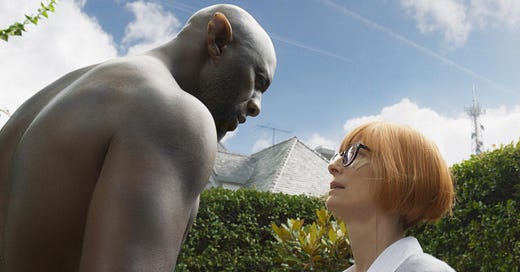Three Thousand Years of Longing
George Miller's fairy tale for adults is a highly ambitious film that ultimately succeeds despite its messiness.
A new George Miller film doesn’t come around very often, so whenever the Australian auteur has a new film up his sleeves, it’s always worth the watch.
Miller really has done it all; he’s made family films like “Babe: Pig in the City” and the “Happy Feet” movies, he directed the “Mad Max” franchise, he’s also done comedy, horror, and period dramas.
He’s also coming off what is without a doubt the biggest success of his career with the Oscar-winning film “Mad Max: Fury Road,” a film that despite being released seven years ago has gone on to become hailed as one of the greatest action movies ever made.
It’s easy to see why one would be so excited for “Three Thousand Years of Longing.” It’s also headlined by two of the most talented performers in the industry with Idris Elba and Tilda Swinton, so what’s not to like.
The film opens with Alithea Binnie (Tilda Swinton), a scholar who is seemingly satisfied with her life. She doesn’t have kids to worry about, she’s moved on from her divorce from her college sweetheart, and is traveling around the world.
During a trip to Istanbul, Alithea discovers a strange glass blue bottle in a shop, which she ends up opening with a toothbrush inside her luxurious hotel room. Emerging from the bottle is Djinn (Idris Elba), a weary genie who tells Alithea that he will grant her three wishes. From there the two have a conversation that spans, you guessed it, three thousand years.
If that already sounds strange, just wait until you see the movie.
Swinton and Elba are by far the movie’s greatest assets, each delivering excellent performances. Elba’s genie is far different than one might expect. This isn’t the Disney-fied Genie, instead Elba’s Djinn isn’t that confident, in fact he’s pretty insecure.
One of the most surprising aspects is that Elba is able to show some of his comedic chops with his deadpan delivery. His chemistry with Swinton is absolutely electric as well, which is good since most of the film is just the two of them clad in white bathrobes sitting in a hotel room. Their back and forth never fails to be engaging and while the script isn’t as insightful as it thinks it is, the dialogue does leave a lot to ponder long after the credits roll.
The film’s cinematography, editing style, and visual flair are unique, Miller clearly makes sure to let the audience know that this is his film. Combining modern day aesthetics with elaborate sets there is rarely a dull frame in the film. In fact, despite costing less than half of what most superhero blockbusters cost, the film looks visually far more interesting than most of the big-budget fare that has hit the screen this past summer.
The film starts to trip up in terms of how the story is played out. A large bulk of the film is spent with Djinn’s flashbacks or ‘his stories’ of each time he was sent back to a bottle. While the film’s colorful visuals never flounder, the film starts to fail to keep up with itself. Some of these stories end up feeling rushed while others drag on for far too long, resulting in the audience never feeling emotionally invested in Djinn’s journey. By the time Alithea and Djinn’s story really takes a turn, the film is nearly over.
“Three Thousand Years of Longing” may just as well become a cult film as time goes on. Most of its audience will either love it or walk out of the theater feeling empty and jaded. One thing is for certain, there really has never been a movie quite like this.





